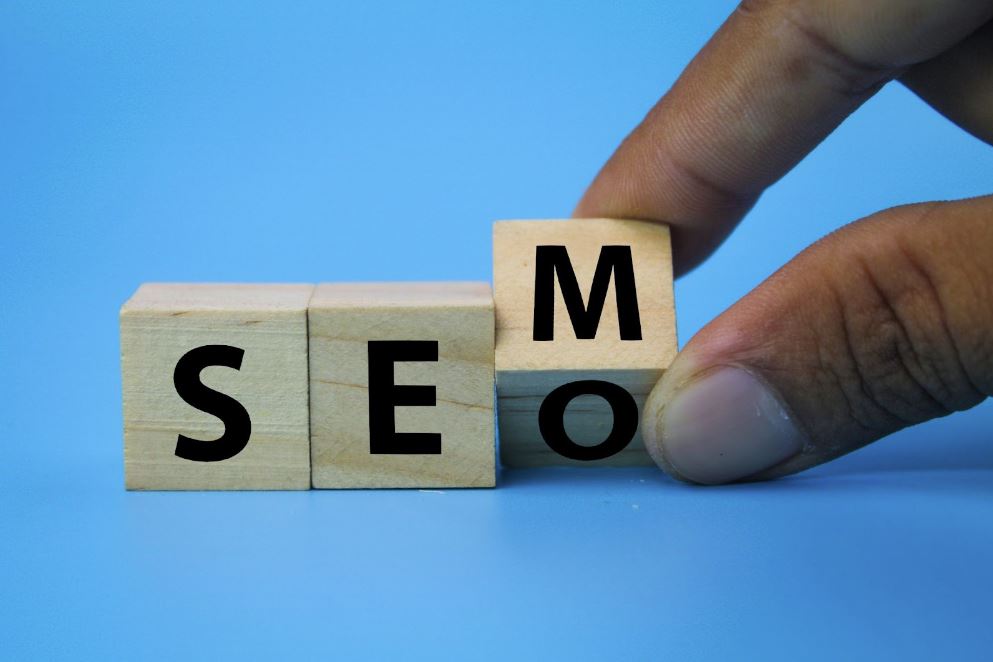Today, businesses constantly seek to enhance their online presence and attract more customers. One of the most effective strategies for achieving this is Search Engine Marketing (SEM). SEM is a powerful digital marketing tool that helps businesses gain visibility on search engines, drive targeted website traffic, and boost sales and revenue. In this blog, we will explore the world of SEM, its key components, benefits, and how it can be leveraged for business success.
Understanding the Basics of Search Engine Marketing
Search Engine Marketing (SEM) is a form of digital marketing that promotes websites by increasing their visibility in search engine results pages (SERPs) through paid advertising. Unlike Search Engine Optimization (SEO), which focuses on improving organic search rankings, SEM leverages paid strategies to place ads prominently in search results. By bidding on specific keywords, businesses can ensure their ads appear when users search for those terms, driving immediate and targeted traffic to their sites.
The Core Components of Search Engine Marketing
Paid Search Ads
Paid search ads, also known as Pay-Per-Click (PPC) ads, are the cornerstone of SEM. These ads appear at the top or bottom of search engine results pages and are marked as “sponsored” or “ad.” Businesses bid on keywords relevant to their products or services; when users search for those keywords, the ads are displayed. Advertisers only pay when a user clicks on their ad, making PPC a cost-effective way to attract potential customers. For instance, if a business sells handmade jewelry, they might bid on keywords like “buy handmade jewelry” or “unique handmade necklaces.”
Organic Search vs. Paid Search
While organic and paid search aim to drive website traffic, they differ significantly.Organic search results are determined by search engine algorithms based on relevance and quality, and they appear below paid ads. Paid search results, on the other hand, are influenced by bidding strategies and ad relevance. Integrating both strategies can yield the best results, as organic search builds long-term credibility, while paid search offers immediate visibility.
Key Elements of a Successful Search Engine Marketing Campaign
Keyword Research and Selection
Keyword research is the foundation of any SEM campaign. Identifying the right keywords ensures ads are shown to the most relevant audience. Tools like Google Keyword Planner, SEMrush, and Ahrefs can help identify high-performing keywords. Businesses should focus on a mix of broad, exact, and long-tail keywords to capture a wide range of search queries. For example, a bakery might target broad keywords like “bakery near me,” exact match keywords like “artisan sourdough bread,” and long-tail keywords like “best gluten-free pastries in New York.”
Ad Creation and Optimization
Creating compelling ad copy is crucial for attracting clicks and conversions. Ads should be clear, concise, and include a strong call-to-action (CTA). Ad extensions, such as site links, callouts, and structured snippets, can enhance ads by providing additional information. A/B testing different ad variations helps optimize performance by identifying which versions resonate most with the audience. For instance, testing variations like “Shop the Best Summer Dresses” vs. “Buy Trendy Summer Dresses Today” can reveal which message attracts more clicks.

Landing Page Optimization
An effective SEM campaign doesn’t end with the ad click; it extends to the landing page. Landing pages should be relevant to the ad content, load quickly, and provide a seamless user experience. Clear headlines, engaging visuals, and persuasive CTAs are essential for converting visitors into customers. Regularly updating and testing landing pages can significantly improve conversion rates. For example, a landing page for a travel agency’s ad for “Affordable Caribbean Vacations” should feature beautiful images of Caribbean destinations, clear pricing, and easy booking options.
Bidding Strategies in SEM
Successful SEM campaigns require strategic bidding to maximize return on investment (ROI). Advertisers can choose between manual and automated bidding strategies. Manual bidding gives more control over individual keyword bids, while automated bidding uses algorithms to optimize bids based on campaign goals. Common bidding strategies include Cost-Per-Click (CPC), Cost-Per-Thousand Impressions (CPM), and Cost-Per-Acquisition (CPA). Selecting the right strategy depends on the campaign objectives and budget. For example, a company focused on lead generation might prefer CPA bidding to control the cost of acquiring new customers.
The Role of Quality Score in SEM
Quality Score is a metric search engines use to assess the relevance and quality of ads, keywords, and landing pages. A higher Quality Score can lead to better ad placements and lower costs per click. Factors influencing Quality Score include click-through rate (CTR), ad relevance, and landing page experience. Improving Quality Score involves creating relevant ad copy, targeting appropriate keywords, and ensuring a positive user experience on the landing page. For instance, improving the relevance of ad copy by closely matching it to the keywords can boost the Quality Score.
Tools and Platforms for SEM
Several tools and platforms can help manage and optimize SEM campaigns. Google Ads and Bing Ads are the most popular platforms for running PPC campaigns. Google Analytics provides valuable insights into website performance and user behavior. Tools like SEMrush, Ahrefs, and AdWords Editor offer advanced features for keyword research, competitor analysis, and campaign management. Utilizing these tools effectively can enhance the efficiency and effectiveness of SEM efforts. For example, SEMrush can help identify competitor strategies, allowing businesses to refine their campaigns.
Measuring and Analyzing SEM Performance
Monitoring and analyzing SEM performance is crucial for continuous improvement. Key performance metrics include click-through rate (CTR), cost per click (CPC), cost per acquisition (CPA), and conversion rate. Regular performance analysis helps identify areas for optimization and ensures that campaigns meet their goals. Tools like Google Analytics and SEMrush provide detailed reports and insights, enabling businesses to make data-driven decisions. For instance, analyzing which keywords have the highest conversion rates can help allocate budget more effectively.
Benefits of Search Engine Marketing Services for Businesses
Immediate Visibility
One of the primary advantages of SEM is its ability to provide instant visibility on search engines. Unlike SEO, which can take time to yield results, SEM immediately places ads at the top of search results. This quick visibility can drive traffic and generate leads within hours of launching a campaign. For example, a new e-commerce store can start seeing visitors and sales from day one with a well-targeted SEM campaign.
Targeted Advertising
SEM allows businesses to target specific audiences based on keywords, location, demographics, and more. This precise targeting ensures that ads are shown to users most likely interested in the products or services offered. By reaching the right audience at the right time, businesses can maximize the effectiveness of their advertising efforts. For instance, a local restaurant can target ads to users within a specific radius and during peak meal times.
Measurable Results
One of the standout features of SEM is the ability to measure and track results in real time. Advertisers can monitor metrics like impressions, clicks, conversions, and ROI. This transparency allows for continuous optimization and ensures that marketing budgets are spent effectively. For example, tracking the ROI of different keywords can help refine the campaign to focus on the most profitable ones.
Cost-Effective Marketing
SEM offers flexibility in budgeting, allowing businesses to control their advertising costs. With PPC campaigns, advertisers only pay when users click on their ad, making it a cost-effective strategy. Additionally, setting daily or monthly budgets helps prevent overspending and ensures campaigns stay within financial limits. For example, a small business can start with a modest budget and gradually increase spending as they see positive results.
Common Challenges in Search Engine Marketing
High Competition
The competitive nature of SEM can pose challenges, especially in industries with high keyword costs. To overcome competition, businesses must conduct thorough keyword research, create compelling ad copy, and continuously optimize their campaigns. Differentiating ads with unique value propositions and targeting long-tail keywords can also help mitigate competition. For example, an online bookstore might find high competition for “buy books” but less for “buy rare first editions.”

Budget Management
Effective budget management is crucial for SEM success. Overspending on campaigns can lead to financial strain, while underspending can limit visibility and reach. Regularly reviewing and adjusting budgets based on performance metrics helps ensure that campaigns are cost-effective and aligned with business goals. For instance, reallocating budget from underperforming keywords to those with higher conversion rates can improve overall ROI.
Ad Fatigue
Ad fatigue occurs when users become desensitized to repeated ads, leading to decreased engagement. To combat ad fatigue, businesses should regularly update and refresh their ad creatives. A/B testing different ad variations and rotating ads can help maintain audience interest and improve overall campaign performance. For example, a seasonal retailer can create different ad versions for summer and winter products.
Future Trends in Search Engine Marketing
AI and Automation in SEM
Artificial Intelligence (AI) and automation are transforming the SEM landscape. AI-powered tools can analyze vast amounts of data to optimize bids, target audiences, and create personalized ad experiences. Automation streamlines campaign management, allowing marketers to focus on strategic planning and creativity. Embracing AI and automation can significantly enhance the efficiency and effectiveness of SEM efforts. For example, Google’s Smart Bidding uses machine learning to optimize bids for maximum conversions.
Voice Search and SEM
The rise of voice search is changing how users interact with search engines. Voice search queries tend to be longer and more conversational, requiring businesses to adapt their SEM strategies. Optimizing for natural language keywords and creating content that answers common voice queries can help capture this growing search traffic segment. For instance, a home services company might target voice search queries like “find a plumber near me” or “how to fix a leaky faucet.”
Personalization in SEM
Personalization is becoming increasingly important in SEM. Tailoring ads to user preferences and behaviors can enhance engagement and drive conversions. Dynamic ad creation, personalized landing pages, and retargeting strategies are ways to achieve personalization in SEM campaigns. As consumer expectations for personalized experiences grow, businesses that embrace this trend will gain a competitive edge. For example, an online fashion retailer can show personalized ads based on a user’s past browsing and purchase history.
Learn More About the Importance of Search Engine Marketing for Your Business
Search Engine Marketing (SEM) is a powerful tool for businesses looking to enhance their online presence and drive targeted traffic. Businesses can create effective campaigns that deliver measurable results by understanding the key components of SEM, such as paid search ads, keyword research, ad creation, and landing page optimization. While SEM offers immediate visibility, targeted advertising, and cost-effective marketing, it presents challenges like high competition and budget management. Staying ahead of future trends, such as AI and automation, voice search, and personalization, will ensure businesses continue leveraging SEM for success in the dynamic digital landscape.
Check out our BrandRep blog to learn more about paid ads, digital marketing services, and more!










